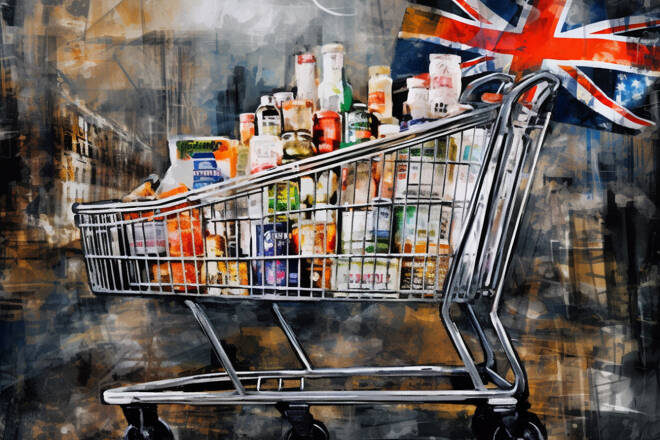Advertisement
Advertisement
UK CPI Softens in May; Iran Tensions Stir Uncertainty on BoE Policy Path; GBP/USD Spikes
By:
Key Points:
- UK inflation cooled to 3.4% in May, fueling speculation about BoE rate cut bets amid slowing economic momentum.
- Core inflation dropped to 3.5%, below forecasts, supporting expectations of easing monetary policy.
- Sticky services inflation may delay BoE cuts despite weakening GDP and retail demand concerns.
UK Inflation Eases, but Oil Shock Clouds Rate Cut Bets
Softer-than-expected UK inflation data fueled speculation about Bank of England rate cut bets on Wednesday, June 18.
The UK’s annual inflation rate (headline) cooled from 3.5% in April to 3.4% in May, aligned with a consensus of 3.4%. Core inflation dropped from 3.8% to 3.5% in May, below a consensus of 3.6%.
Key price trends from the Office for National Statistics included:
- The Consumer Prices Index, including owner-occupier housing costs (CPIH), rose 4.0% in the 12 months to May after rising 4.1% in April.
- The largest downward contribution came from transport, offsetting upward contributions from food, and furniture and household goods.
- The Core CPIH (excluding energy, food, alcohol, and tobacco) increased by 4.2% in the 12 months to May, compared with 4.5% in April.
- Core CPI (excluding energy, food, alcohol, and tobacco) eased from 3.8% in the 12 months to April to 3.5% in the 12 months to May.
- The CPI services annual rate slowed from 5.4% in April to 4.7% in May.
Despite the softer inflation readings, a spike in WTI crude oil prices in response to the Iran-Israel conflict may cloud the inflation outlook. Uncertainty about CPI trends may leave the BoE in a policy-holding pattern despite a faltering UK economy.
BoE to Hold Rates in June
Economists expect the BoE to keep interest rates at 4.25% on Thursday, June 19, despite the UK economy losing momentum in April. The UK GDP fell 0.3% month-on-month as services output dropped for the first time since October 2024.
However, sticky inflation and potentially higher oil prices could raise stagflation risks. Monetary policy uncertainty and a worsening economic outlook may pressure GBP/USD.
Ahead of May’s inflation report, ING Economics commented on the BoE’s potential rate path, stating:
“We expect the Bank of England to keep rates at 4.25% on 19 June, but some disappointing job numbers, lower wage growth, and a more optimistic outlook for services inflation mean we expect cuts in August and November.”
May’s services inflation numbers supported ING Economics’ outlook. However, the Iran-Israel conflict remains a curveball for economists and central bankers.
Friday’s upcoming retail sales figures could give a better gauge of momentum in the UK economy and the BoE’s path forward.
GBP/USD Volatility Post-Inflation Data
Ahead of the inflation report, the GBP/USD dipped to a low of $1.34145 before climbing to a high of $1.34489. Following the report, the pair fell to a low of $1.34403 before surging to a high of $1.34621.
On Wednesday, June 18, the GBP/USD was up 0.19% to $1.34530. The upswing likely signaled the potential impact of sticky inflation on the BoE’s policy outlook.
Looking Ahead
Traders must now turn to the BoE’s interest rate decision on June 19 and Friday’s UK retail sales. Consumer spending data may offer further insights into consumer sentiment and potential GDP and inflation trends.
A drop in retail sales could signal further economic weakness and softer inflation, supporting multiple BoE rate cuts. However, strong retail sales could dampen BoE rate cut bets, sending GBP/USD higher.
In parallel, trade developments and the Iran-Israel conflict will remain key drivers of risk sentiment and GBP/USD price action.
Don’t miss our live BoE rate decision coverage, real-time insights into global macro trends, and GBP forecasts here.
About the Author
Bob Masonauthor
With over 28 years of experience in the financial industry, Bob has worked with various global rating agencies and multinational banks. Currently he is covering currencies, commodities, alternative asset classes and global equities, focusing mostly on European and Asian markets.
Advertisement
